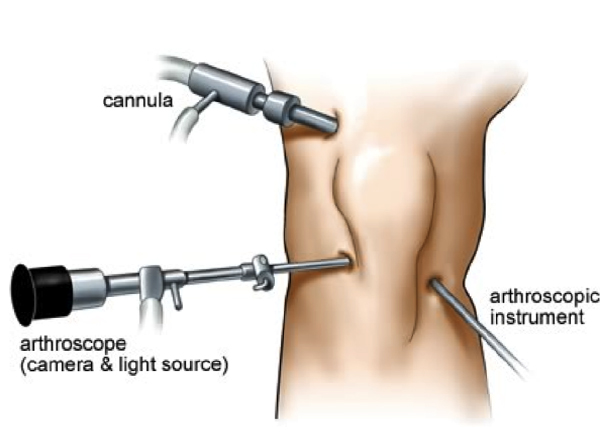
Knee arthroscopy is a surgical technique that can diagnose and treat problems in the knee joint. During the procedure, your surgeon will make a very small incision and insert a tiny camera — called an arthroscope — into your knee. This allows them to view the inside of the joint on a screen. The surgeon can then investigate a problem with the knee and, if necessary, correct the issue using small instruments within the arthroscope.
Arthroscopy diagnoses several knee problems, such as a torn meniscus or a misaligned patella (kneecap). It can also repair the ligaments of the joint. There are limited risks to the procedure and the outlook is good for most patients. Your recovery time and prognosis will depend on the severity of the knee problem and the complexity of the required procedure.
Your doctor may recommend that you undergo a knee arthroscopy if you’re experiencing knee pain. Your doctor might have already diagnosed the condition causing your pain, or they may order the arthroscopy to help find a diagnosis. In either case, an arthroscopy is a useful way for doctors to confirm the source of knee pain and treat the problem.
Arthroscopic surgery can diagnose and treat knee injuries, including:
Your doctor will give you an anesthetic before your knee arthroscopy. This may be:
If you’re awake, you may be able to watch the procedure on a monitor.
The surgeon will begin by making a few small incisions, or cuts, in your knee. Sterile salt water, or saline, will then pump in to expand your knee. This makes it easier for the surgeon to see inside the joint. The arthroscope enters one of the cuts and the surgeon will look around in your joint using the attached camera. The surgeon can see the images produced by the camera on the monitor in the operating room.
When the surgeon locates the problem in your knee, they may then insert small tools into the incisions to correct the issue. After the surgery, the surgeon drains the saline from your joint and closes your cuts with stitches.